| Written by: | Students |
| Date posted: | February 15, 2019 |
| Posted in: | Home / Locations / Guatemala / Antigua / |
Adventures in Antigua
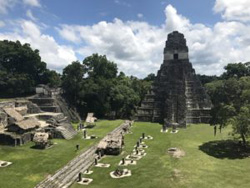 This summer I will be travelling to Antigua, Guatemala, where I will be following a Spanish course at our language school.
This summer I will be travelling to Antigua, Guatemala, where I will be following a Spanish course at our language school.
History
Antigua, south of the country’s capital Guatemala City, sits at an altitude of 1,533 metres. This beautiful city was capital of the Spanish captaincy of Antigua Guatemala, was once the most important seat of the Iberian government between Mexico City and Lima, Peru.
Founded as Santiago de los Caballeros de Guatemala in 1524, it was moved just 3 years later after successive clashes with native Kaqchikel Mayans in the area. The new settlement was rebuilt on what is now the Old City, or Ciudad Vieja. This second capital was destroyed in turn by an eruption that descended from the slopes of Volcán de Agua (“Volcano of Water”) and was reconstructed 5 miles away in the Panchoy Valley. This third capital, which retained the name Santiago de Caballeros, became a thriving political, economic, religious, and cultural centre of a kingdom which stretched across the entirety of Central America.
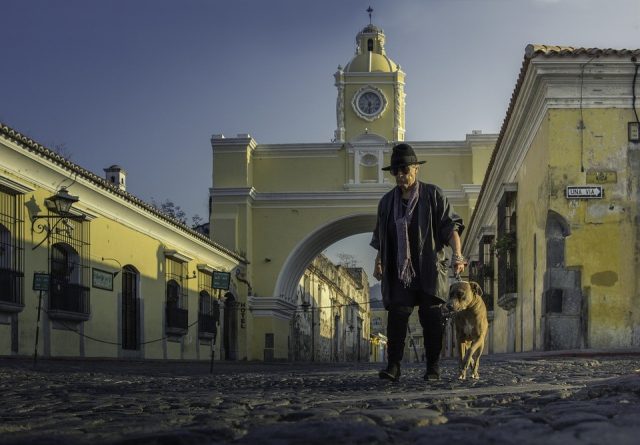
When this Santiago was almost completely demolished by successive earthquakes in the 1700s, it was moved to the site of Nueva Guatemala (‘New Guatemala’) – now Guatemala City – and Santiago became known as Antigua Guatemala (‘Old Guatemala’), or simply ‘Antigua’. Since then, Antigua has become a popular tourist attraction thanks to its rich history, its variety of colonial buildings, which are spread throughout the city, and the impressive mountains surrounding it.
The region
People tend to have images of Central America that are not wholly accurate. It is often seen as an arid, desolate region rife with crime and poverty and – while this may be true for certain specific locations – this view simply does not do the region justice.
One of its main selling points is its wonderful climate, thanks to its proximity to the equator. Mesoamerica (as Central America is often called) enjoys average summer temperatures of 25 – 30°C and maximum lows of around 10°C – clement for even the most pessimistic traveller! The area also sits atop several geological fault-lines, making it a hotspot for volcanic activity and earthquakes. Some of this activity and energy no doubt affects the flora and fauna of the region. With rainforests and coral reefs and mountains and deserts and mangroves, some of the most magnificent natural environs on the planet – each with its own rich and often endemic selection of wildlife – can be found in this corner of the world.
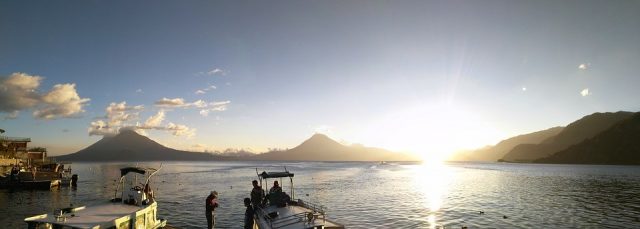
For Guatemala itself, one of its main attractions is the cost of visiting there. Because mass-tourism has not yet arrived in the country, life is very cheap compared to that in the West. You can easily travel throughout the country – and even throughout Central America – by plane and bus without becoming bankrupt. I have scheduled a trip going through Panama, Costa Rica, Nicaragua, and El Salvador which has cost less than $800 in total, including tours, transfers, stays at 4* hotels (breakfast included), and 4 separately-booked flights. If you prefer, you can do the same trip for half the price by cutting costs on accommodation and flights (e.g. opt for a bus instead of flying). What’s more, another reason for visiting one of the Central American countries is the inhabitants, who are kind and hospitable – nowhere else have I been welcomed with so much peace, love, and friendship.
Spanish language school
Our school in Antigua has two buildings. The main facility is located in a quiet area in the heart of the city, just a short walk from the main Plaza. It is comprised of 22 bright classrooms and a beautiful garden where you can study independently, chat to fellow students, or simply soak up the glorious sunshine. As well as the garden, students have access to a snack bar and 2 computer labs during their studies.
The second building is situated just a few minutes away, where you can have classes outdoors on the rooftop terrace whilst enjoying stunning views of the city. Popular local attractions such as the Chocolate Museum, the Santa Catalina Archway, and the ruins of a 17th-century monastery are all within easy walking distance of both buildings. In the surrounding area are many shops, cafes, and restaurants – as well as numerous green spaces hidden around the city – which all give visitors a taste of life in Antigua.
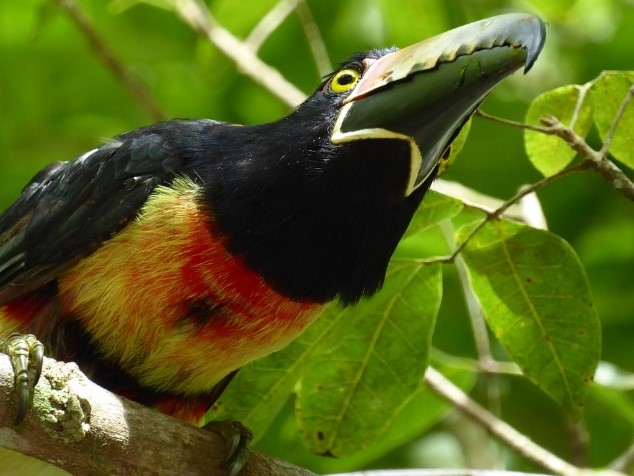
The best of Guatemala
Let’s be honest: when you first think of Guatemala, you probably think about the United Fruit Company and its ‘banana republic’. Though this perception of the country may have persisted somewhat to the present day, that era of the country’s history was nearly 60 years ago and times have changed – significantly. Guatemala still faces some political difficulties, but it has benefited from economic growth and democratic (rather than oligarchical) politics in the last several decades. The country now has the largest economy in Mesoamerica, and its various tourist hotspots have helped to invigorate Antigua and the surrounding areas.
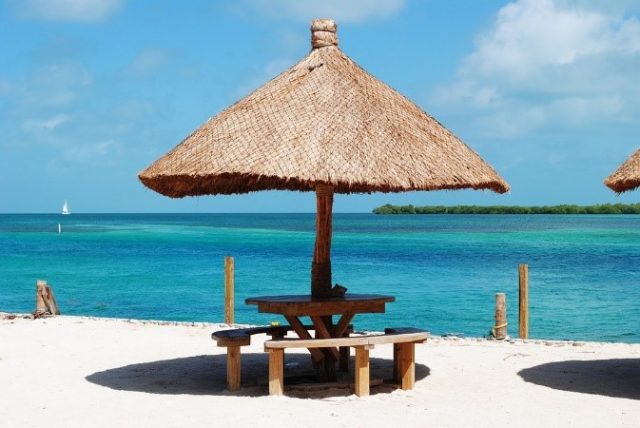
Lake Atitlán, which is close to our school in Antigua, is often included in the school’s weekly programme of leisure activities. Located in Sololá, in a crater (‘caldera’) that was formed by the explosion of a very large volcano, the area is known for its unique fauna and flora. The lake provides a means of livelihood for many locals – mostly indigenous people or Maya from the surrounding villages – as its fantastic scenery attracts many tourists. No lake in Central America has such an interplay of natural beauty and cultural landscape as Lake Atitlán. It gets crowded at the weekend, when the people from Guatemala City and Antigua visit to relax at the lake’s shore, drive a motorboat, board a kayak, or sail on the 340-metre-deep water. If you prefer to explore on your own, visit during the week for a calmer trip!
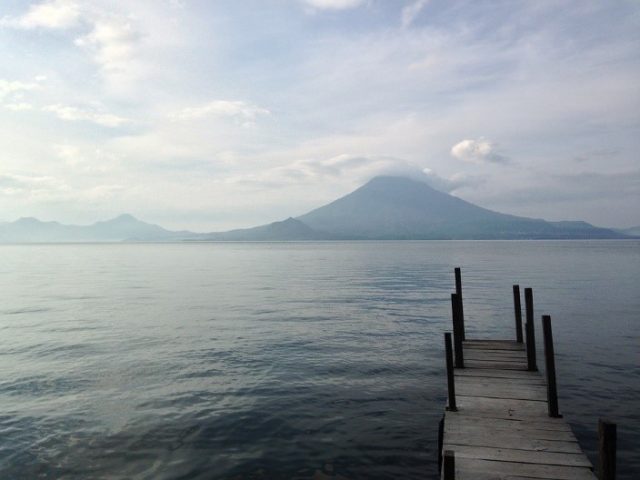
The Tikal ruins, which were declared a UNESCO World Cultural and Natural Heritage Site in 1979, are one of Guatemala’s most popular tourist attractions and are visited by hundreds of thousands of people every year. Tales had been told for hundreds of years of the ancient ruins in the middle of the rainforest in the Péten region. At the height of Mayan presence in Guatemala (600 BC – 900 AD), these buildings – ancient step pyramids – were the highest man-made structures in the world. After the population left the complex, the jungle took over, meaning it took extensive work to uncover, excavate, and restore the ruins. These remains are a testimony to the power and influence of the Mayan kingdom and are worth a visit in every aspect.
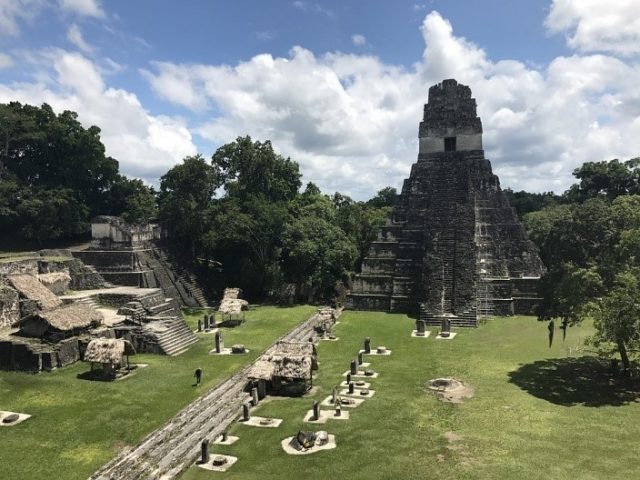
Semuc Champey, near Cobán in the Alta Verapaz, is one of Guatemala’s most impressive natural spectacles. Essentially it is a narrow valley with a river winding through it. On several steps, basins filled with crystal-clear water have accumulated, shimmering green and blue in the sun and forming a 300-metre-long limestone bridge. It is highly recommended to take a look at this breath-taking scenery from the El Mirador viewing platform. If you visit this amazing spot, don’t forget your swimsuit – bathing in one of the pools is both popular and welcome.
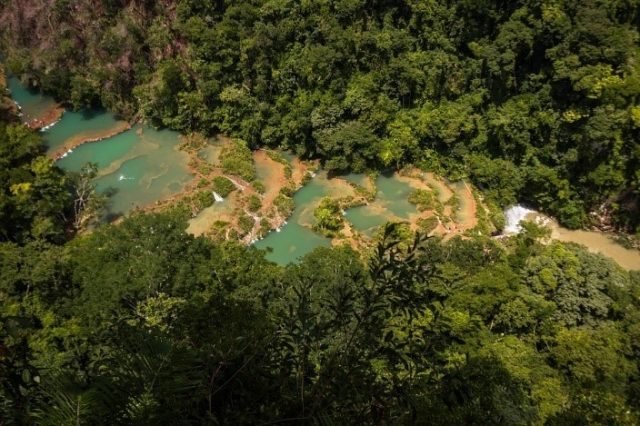
The verdant heart of Antigua, Parque Central, is a gathering place for locals and visitors alike, making it the perfect place to practice your new-found Spanish skills! From here you can easily explore the cobbled streets, lined with stunning Baroque architecture, and feel as if you’ve travelled back to the 18th century. You will encounter many shops selling traditional crafts, such as woodwork, basket-weaving, and even jade, which was precious to the Mayans and holds a special place in Guatemalan culture.
My Mesoamerican journey
Because I want to visit as many Central American countries as possible, I did some research to see how I could fit it all in. Happily, I found out that if I book on-time and plan my trip properly, I am able to see all 7 countries in the region in just 1 month!
Generally, I will be travelling by bus, since it’s the cheapest way of transportation; if you book a premium ticket (which still is quite cheap), you can travel in more luxurious circumstances than is usually available on normal bus services. This method of transport does take longer than flying – for example, a bus from Antigua to the Flores (Tikal ruins) takes 10 hours, while flying (which is 4 times more expensive at $200 per ticket) will only take 1.5 hours. It all depends on what your preferences are. If you want to undergo the complete Latin American experience you should travel by bus – just not the so-called chicken buses which, though extremely cheap, are overloaded and not as comfortable or safe as the premium services.
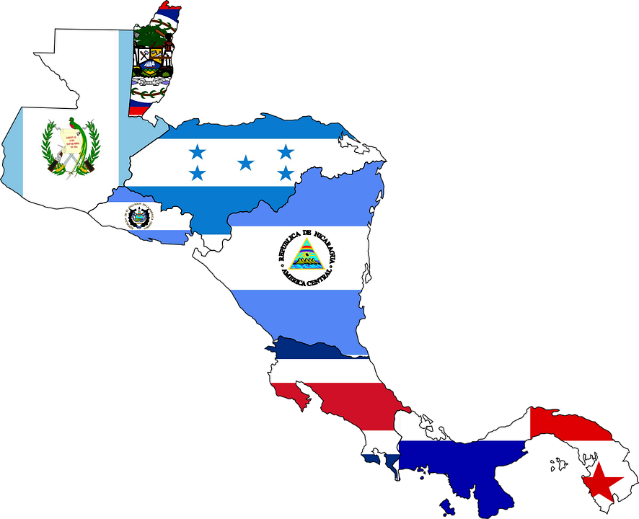
I will start my journey in Guatemala, arriving in Guatemala City after a 16-hour flight from Amsterdam with 1 short stopover in Panama City. Because I have booked a language course at our language school in Antigua, I will get a 2-way transfer service between Guatemala La Aurora International Airport and my accommodation in the city. After following an intensive Spanish course from 15th July until 9th August, I am planning to catch the daily operating charter flight from Guatemala City to Flores, where I will be visiting the ancient Mayan ruins of Tikal, the most visited Mayan site outside Mexico.
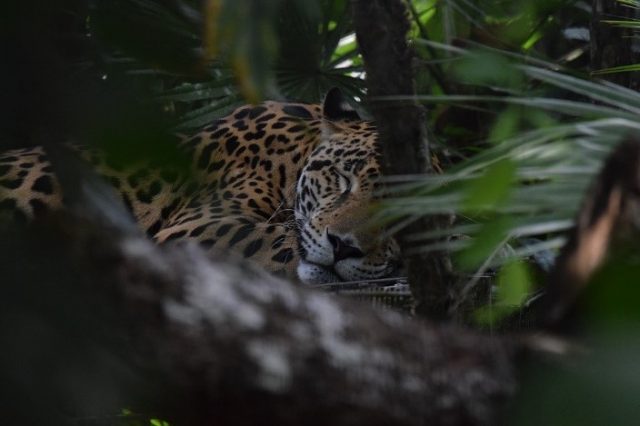
Because Flores is next to the Belizean border, I will cross over and travel to San Ignacio, famous for its magnificent caves and varied wildlife. I will be staying a few days in Belize and enjoying the mix of cultures in this small, tough, wonderful country. The three main Belizean landmarks are the: Great Blue Hole, a giant marine sinkhole; the Great Barrier Reef, world’s second biggest coral reef, located just in front of Belize’s coastline; and the ATM cave (Actun Tunichil Muknal, or ‘Cave of the Crystal Sepulchre’), an archaeological site where nature’s best meets ancient Mayan relics. In this cave I will be walking, swimming, floating past skeletons, fossils, and Mayan, all whilst enjoying one of Mother Nature’s many wonders.
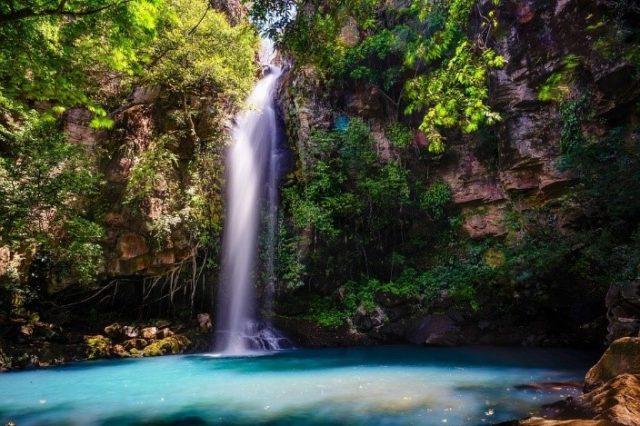
After Belize, I am planning to fly to Panama City to see the world’s longest man-made channel, which saves a lot of ships a lot of time each year by providing a route through a continent and out to the other side. Panama Canal, opened in 1914, connects the world’s largest oceans and was first proposed by the King of Spain way back in the 16th-century. Construction eventually began in 1881 and today, over 100 years after it first allowed passage through the Americas, it oversees the movement of over 350 million tons of shipping annually.
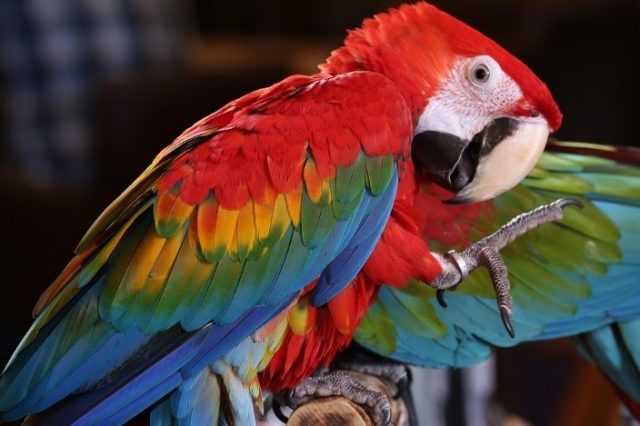
From Panama I will fly to Liberia in Costa Rica, where I will be kayaking through the Costa Rican mangroves whilst falling in love with its flora and fauna. After following Mowgli’s footsteps in the Central American jungle, I will travel by bus to Léon, Nicaragua, via their capital city Managua and one of world’s best kept secrets: Ometepe. This volcanic island is situated in the middle of Lake and is formed by two volcanoes named Concepción, which is still considered to be active, and Maderas, also known as ‘the Sleeping Giant’. After surviving a night next to a pair of volcanoes, I think I will be ready to conquer one! And what’s better than overcoming a volcano by snowboard?
To fulfil this dream, I will need to travel to the Cerro Negro volcano near Léon, which is just a 2-hour bus ride from Managua. Apart from the massive black volcano, this picturesque city is more commonly known for its stunning cathedral, which is almost literally dazzlingly beautiful; when the sun reaches its peak, the white roof makes it nigh-on impossible to see anything without sunglasses.
All of the above I plan to do in just a month – watch this space for updates on how I get on!
And finally: but what about safety?
We do get asked about personal safety when travelling in Guatemala, but you really shouldn’t let concerns about safety deter you from visiting this amazing country. In over 20 years of arranging courses in Antigua, not a single Apple Language Courses student has come to any harm while studying in Guatemala!
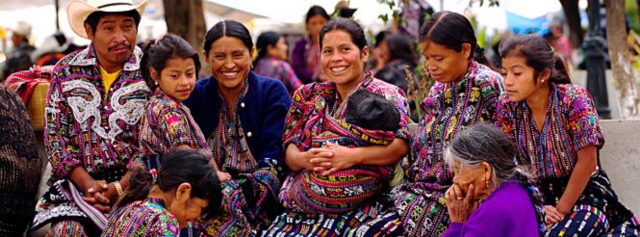
Of course, there is a risk of experiencing crime in any unknown location. More familiar holiday destinations such as Barcelona, Madrid, Rome, Paris, or London are well-known for exposure to pickpocketing and theft. Despite this, these cities welcome a whopping 113 million visitors each year between them.
For most tourists, the risk associated with travelling to Central America is the same as that of travelling to any European city. Staff at our school in Antigua will offer you guidance on personal safety and will advise you about areas that are best avoided so as to minimise risk. As living standards in Central America are generally lower than you would expect at home, and you should also avoid putting valuables on public display, especially in popular tourist areas which can be hotspots for pickpockets. It’s also advisable to divide your cash so that, should you fall foul of a petty thief, you are not left penniless.
Lonely Planet offers the following insight regarding safety in Guatemala:
“Guatemala is a mostly safe destination, but crime can happen.
- The most frequently reported type of nasty incident involves robbery on walking trails.
- The days of robbers targeting tourist buses out on the open highway seem to be thankfully in the past, although some tourists in rental cars have been targeted.
- The crime you’re most likely to become a victim of involves pickpocketing, bag-snatching, bag-slitting and the like in crowded streets, markets, bus stations, and on buses, but also in empty, dark city streets.
- There are dedicated tourist police in Guatemala City and Antigua. Elsewhere, Proatur offers 24-hour assistance to tourists and is a good initial point of contact if you get into difficult”
Our advice is to properly plan your trip before arrival, take sensible precautions during your stay, and be a bit more aware of your surroundings than you would normally be at home. When booking tours, book a registered guide and/or book via an official agency. Our school offers a variety of tours and activities, both in Antigua and in the wider region (including a Lake Atitlan excursion and coffee-making tours).
If you have any questions or concerns, please feel welcome to contact us, as we will always be delighted to answer all your questions.
Blog Categories
- Activities (4)
- Yoga (1)
- Christmas Courses (17)
- Food (21)
- Recipes (4)
- Information (83)
- Instagram (11)
- Language fun (11)
- My travel journal (15)
- Sample Programmes (2)
- Video Guides (11)
- Locations (430)
- America (4)
- Argentina (15)
- Bariloche (4)
- Buenos Aires (8)
- Cordoba (2)
- Mendoza (1)
- Australia (1)
- Sydney (1)
- Austria (4)
- Brazil (5)
- Maceio (2)
- Salvador da Bahia (2)
- Sao Paulo (1)
- Canada (8)
- Chile (4)
- China (7)
- Colombia (2)
- Costa Rica (8)
- Flamingo Beach (5)
- Monteverde (1)
- Cuba (8)
- Havana (3)
- Santiago de Cuba (3)
- Trinidad (2)
- Czech Republic (2)
- Prague (2)
- Dominican Republic (1)
- Santo Domingo (1)
- Ecuador (3)
- Egypt (2)
- Cairo (2)
- England (23)
- Bournemouth (1)
- Brighton (1)
- Bristol (1)
- Cambridge (2)
- Liverpool (9)
- London (3)
- Manchester (2)
- Oxford (1)
- Portsmouth (1)
- France (53)
- Germany (49)
- Greece (4)
- Guadeloupe (3)
- Guatemala (2)
- Antigua (2)
- Ireland (4)
- Italy (78)
- Japan (3)
- Latvia (1)
- Riga (1)
- Malta (3)
- Mexico (10)
- Cuernavaca (1)
- Guadalajara (1)
- Guanajuato (1)
- Mexico City (1)
- Playa del Carmen (6)
- Morocco (1)
- Rabat (1)
- Netherlands (4)
- Panama (1)
- Bocas del Toro (1)
- Boquete (1)
- Peru (5)
- Poland (2)
- Portugal (9)
- Russia (6)
- Moscow (2)
- St Petersburg (2)
- Scotland (2)
- Edinburgh (2)
- Spain (89)
- Alicante (1)
- Barcelona (13)
- Bilbao (1)
- Cadiz (1)
- Costa Adeje (1)
- El Puerto (3)
- Granada (5)
- Ibiza (1)
- Lanzarote (1)
- Madrid (6)
- Malaga (15)
- Marbella (1)
- Murcia (1)
- Nerja (4)
- Pamplona (1)
- Puerto de la Cruz (3)
- Salamanca (3)
- San Sebastian (7)
- Santiago de Compostela (2)
- Seville (5)
- Tenerife (6)
- Valencia (9)
- Vejer de la Frontera (2)
- Sweden (2)
- Stockholm (1)
- Switzerland (2)
- Montreux (1)
- Ukraine (2)
- Kiev (2)
- United Arab Emirates (1)
- Dubai (1)
- Uruguay (1)
- Montevideo (1)
- New Schools (14)










 Company Number: 08311373
Company Number: 08311373